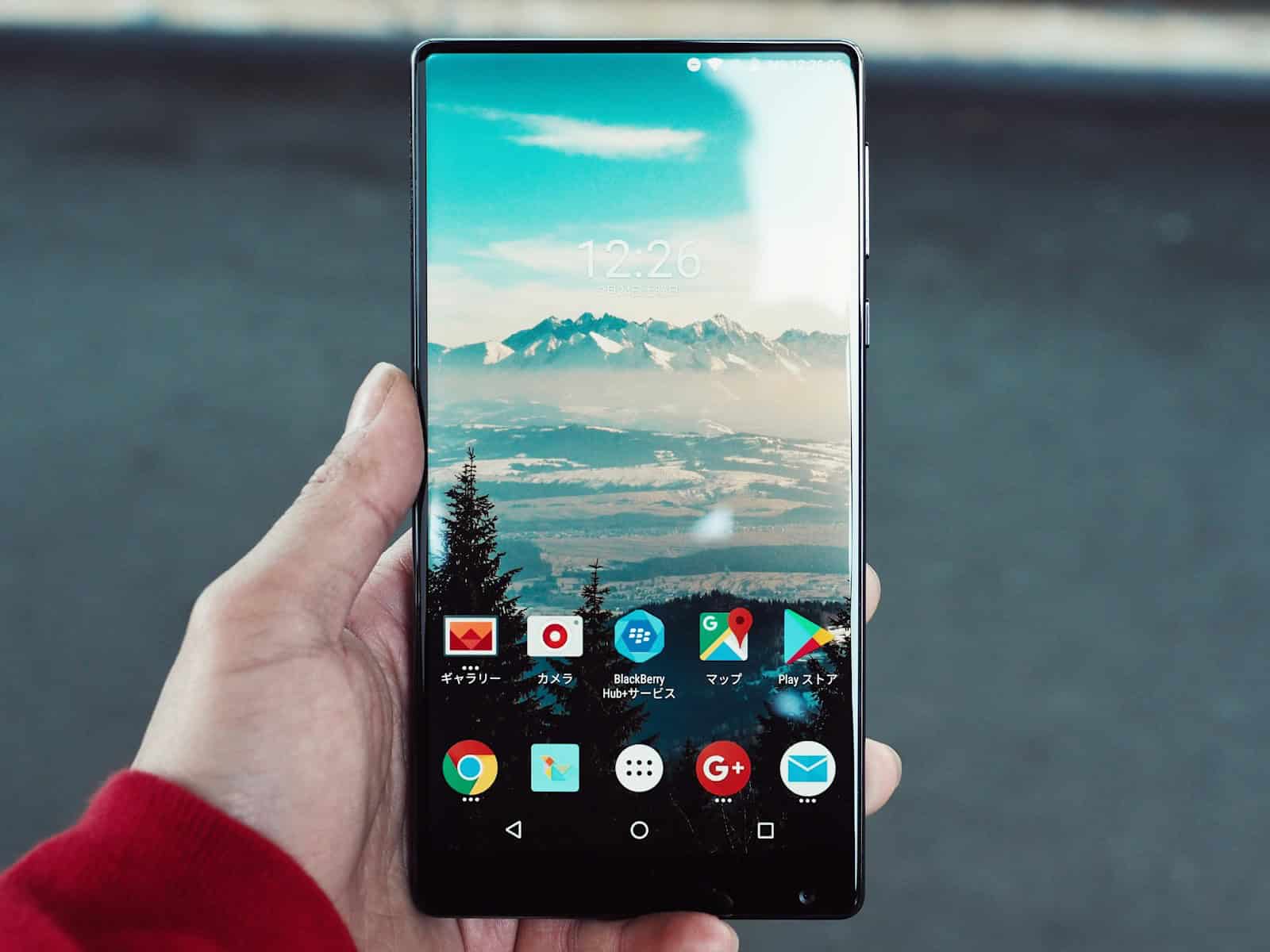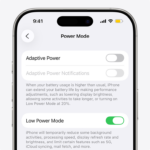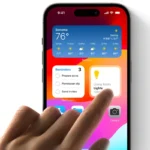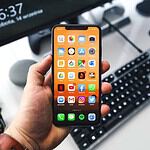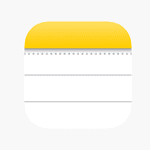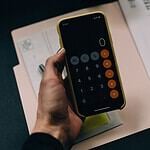Capturing your Android screen has never been easier. Whether you want to show a friend how to use an app or save a video of your gameplay, screen recording is the way to go. Most Android phones now come with a built-in screen recorder that lets you capture video and sound right from your Quick Settings menu.
Not sure how to find this feature? Don’t worry. It’s usually just a swipe and a tap away on newer phones. If your phone doesn’t have a built-in option, the Google Play Store offers many free alternatives like XRecorder that add extra features like facecam recording and video editing tools.
Once you start recording, you can capture everything that happens on your screen. This comes in handy for making tutorials, saving social media content, or recording video calls. You can even choose to record with sound from your microphone, the phone itself, or both at once.
Why Screen Record on Android?
Screen recording is useful for:
- Creating tutorials or app demos
- Capturing gameplay
- Saving video calls or social media clips
- Reporting bugs or issues visually
Most Android phones (Android 11 and newer) now include a built-in screen recorder, so you don’t need third-party apps.
🧩 Step-by-Step: How to Screen Record on Android
Step 1: Open Quick Settings
- Swipe down twice from the top of your screen to open the Quick Settings panel.
- Look for the Screen Record or Screen Recorder icon (it looks like a small camera or video symbol).
- If you don’t see it, tap the pencil/edit icon to add it to your Quick Settings tray.
(Source: CyberLink Guide)
Step 2: Start the Screen Recorder
- Tap Screen Record.
- You’ll see options such as:
- Record audio: Choose “Device audio,” “Microphone,” or both.
- Show touches on screen: (optional) Displays touch indicators.
- Tap Start or Start Recording.
- After a short countdown (usually 3 seconds), recording begins.
Step 3: Stop the Recording
When you’re done:
- Swipe down again from the top of the screen.
- Tap the red recording icon or Stop button.
- The video will automatically save to your Gallery → Screen recordings folder.
📱 Brand-Specific Instructions
Samsung Galaxy Phones
- Swipe down → Tap Screen Recorder.
- Choose Sound settings (Media sounds / Media + Mic / None).
- Tap Start recording.
- Stop using the floating toolbar or from the notification panel.
(Source: GizmoHopper 2025 Guide)
Google Pixel Phones
- Swipe down → Tap Screen Record.
- Choose whether to record audio and show touches.
- Tap Start → Wait for the countdown.
- Stop via the notification bar.
Other Android Brands (e.g., Xiaomi, OnePlus, Motorola)
Most have their own built-in recorders:
- Xiaomi: Tools → Screen Recorder app.
- OnePlus: Quick Settings → Screen Recorder.
- Motorola: Quick Settings → Screen Record.
If your phone doesn’t have one, see below.
🧰 Step 4: Use Third-Party Apps (If Built-in Recorder Is Missing)
If your phone is older (Android 10 or below), try one of these trusted apps:
- AZ Screen Recorder (free, no watermark)
- Mobizen Screen Recorder
- ADV Screen Recorder
You can download them from the Google Play Store.
(Source: GeeksforGeeks)
🧠 Tips for Better Screen Recordings
- Enable Do Not Disturb to avoid notifications.
- Record in landscape for games or videos.
- Check storage space before recording long clips.
- Edit your recordings using built-in tools or apps like CapCut or InShot.
🔚 Summary
| Task | Action |
|---|---|
| Start recording | Swipe down → Tap “Screen Record” |
| Record audio | Choose mic, system, or both |
| Stop recording | Tap “Stop” in notification bar |
| Find video | Gallery → Screen recordings |
In short:
To screen record on Android, open Quick Settings → tap Screen Record → choose your audio preferences → hit Start. When finished, stop from the notification bar, and your video will be saved automatically.
Key Takeaways
- Android phones typically have a built-in screen recorder found in Quick Settings that works with just a few taps.
- You can customize your recordings by adding sound from your microphone, system audio, or changing video quality settings.
- For more features, third-party apps offer options like facecam recording, no time limits, and basic editing tools.
Basics of Screen Recording on Android
Android devices offer built-in screen recording features that let users capture on-screen activities. These tools have become easier to use with newer Android versions and offer several options to customize your recordings.
Understanding Screen Recording
Screen recording on Android allows you to capture everything happening on your phone’s display. Most Android phones now have built-in screen recording tools that can be accessed through the quick settings menu. To start recording, simply pull down the notification shade and tap the screen recording icon.
The process typically includes a short countdown before recording begins. Some phones let you choose between recording a specific app or the entire screen.
When setting up your recording, you’ll find options to:
- Record with or without audio
- Show touch interactions on screen
- Select video quality settings
Samsung devices offer extra features through their Screen Recorder function accessible in the Quick panel.
Benefits of Screen Recording
Screen recording serves many practical purposes in daily smartphone use. It helps create tutorials to show friends and family how to use specific apps or features on their phones.
Gamers use screen recording to capture gameplay for sharing achievements or creating content. This feature eliminates the need for extra equipment when documenting game progress.
Screen recording also proves useful for:
- Saving online videos that can’t be downloaded
- Recording video calls for future reference
- Creating step-by-step guides
- Reporting app bugs with visual evidence
The ability to include audio in recordings enhances the experience. Users can record system sounds, their voice through the microphone, or both simultaneously depending on their needs.
Preparing Your Android Device for Screen Recording
Before you start recording your screen, you need to make sure your device is ready. This means checking if your phone can record screens and setting up the right permissions.
Checking Device Compatibility
Most Android phones made after 2020 have built-in screen recording. If you have an older device, don’t worry. You can still record your screen by downloading an app from the Google Play Store.
To check if your phone has the feature:
- Swipe down twice from the top of your screen to open quick settings
- Look for “Screen Record” option
- If you don’t see it, swipe right to find more options
Some phone brands hide this feature in different places. Samsung phones might have it in the “Advanced features” section in Settings. Google Pixel phones usually have it in the quick settings menu.
Enabling Necessary Permissions
Once you find the screen recording feature, you need to set up permissions. These permissions let the recorder capture what’s on your screen and any sounds.
When you start a recording for the first time, your phone will ask for:
- Screen capture permission
- Microphone access (if you want to record your voice)
- Storage permission (to save the video)
You can choose what to record:
- Just the screen: Good for tutorials
- Screen with device audio: Perfect for recording games
- Screen with microphone: Best for explaining what you’re doing
Always test your settings with a short recording before making an important one. This helps avoid problems with missing audio or poor quality.
Using Built-in Screen Recorders
Many Android phones now come with built-in screen recording tools that make capturing your screen easy without downloading third-party apps. These native recorders offer simple controls and good quality output for most everyday needs.
Screen Recording on Samsung Devices
Samsung devices include a built-in screen recorder that works well for capturing gameplay, tutorials, or video calls. To access it, swipe down twice from the top of your screen to open the Quick Settings panel.
Look for the Screen Record icon in the panel. If you don’t see it, you might need to edit your Quick Settings layout by tapping the three dots and adding the Screen Record button.
Before recording, you can choose your sound settings. Samsung lets you record with:
- No sound
- Media sounds only
- Media sounds and microphone
You can also select your video quality, with options for higher resolution recordings. The recorder can show taps on screen too, which is helpful for tutorials.
Recording with One UI Quick Panel
Samsung’s One UI makes screen recording even easier with its Quick Panel access. This method takes just seconds to start recording your screen.
Swipe down twice to open the full Quick Settings panel. Tap the “Screen Recorder” icon to begin. A countdown will appear before recording starts.
While recording, a small toolbar appears at the top of the screen. This toolbar lets you:
- Draw on the screen
- Add a selfie video overlay
- Pause recording
- Stop recording completely
When finished, tap the stop button. Your recording saves automatically to your Gallery app. The quality is typically good, with Samsung devices often recording at 30-60fps depending on what’s happening on screen.
Third-Party Screen Recording Apps
Android users have several options beyond built-in screen recorders. Third-party apps often provide more features like editing tools, longer recording times, and better quality options.
Popular Screen Recording Applications
XRecorder is one of the top choices for Android screen recording. It offers HD video capture with a simple tap on a floating button. Users like its clean interface and lack of time limits.
AZ Screen Recorder stands out with its video editing features built right into the app. It lets users record their screen with audio and makes sharing videos easy.
ADV Screen Recorder gives users two recording engines to choose from. This flexibility helps when one engine doesn’t work well on certain devices.
FoneLab Mirror focuses on screen mirroring but includes good recording features too. It works well for users who need to display their phone screen on other devices while recording.
Evaluating Free Trial Versions
Most screen recording apps offer free versions with basic features. These free versions often include watermarks or time limits on recordings.
To test an app properly, users should record different types of content. Games, app demos, and normal phone use all put different demands on recording software.
Check for these key features in free trial versions:
- Video quality options
- Audio recording capability
- File size management
- Export formats
- Editing tools
Battery drain is another important factor. Some apps use more power than others, making them poor choices for longer recording sessions.
Storage use varies widely between apps. Better apps compress videos efficiently without losing quality.
Customizing Recording Settings
Android’s screen recording feature offers several customization options to help you capture exactly what you need. You can adjust video quality and control which sounds to include in your recording.
Selecting Video Resolution
Video resolution affects how clear your screen recordings will look. Higher resolution means better quality but creates larger files.
On most Android devices, you can change screen recording settings by going to Settings > System > Advanced > Screenshots and screen recorder. Some phones may have different menu paths, but the options are similar.
Common resolution options include:
- 720p (HD): Good balance between quality and file size
- 1080p (Full HD): Sharper quality but larger files
- Default resolution: Matches your screen’s native resolution
To change resolution before recording, swipe down twice from the top of your screen, tap and hold the Screen Record button, and look for video quality options.
Adjusting Media Sounds and System Audio
Android lets users control which sounds to include in screen recordings. This helps create more useful tutorials or gameplay videos.
When starting a recording, you’ll see audio options after you tap the Screen Record button. These typically include:
- Media sounds: Captures sounds from videos, music, or games
- System audio: Records notification sounds and other system noises
- Microphone: Records your voice while capturing the screen
- No sound: Creates a silent recording
You can customize these settings before each recording session. Some Android phones also let you set default audio preferences in the screen recorder settings.
For the best audio quality, record in a quiet environment when using the microphone option.
Enhancements and Editing
Once you’ve captured your screen recording on Android, you can take it to the next level with various enhancements and editing options. Modern screen recording apps offer tools to make your videos more engaging and professional-looking.
Incorporating Mouse Clicks and Gestures
Adding visual cues for mouse clicks and touch gestures makes tutorial videos much easier to follow. Many screen recorders highlight taps and swipes with customizable colors and animations.
XRecorder offers options to show finger touches as colored dots or circles when you interact with the screen. This feature is perfect for creating how-to videos where viewers need to see exactly where to tap.
You can usually adjust:
- Circle size and color
- Touch animation style
- Duration of the highlight effect
Some apps also display press-and-hold gestures differently from quick taps. This distinction helps viewers understand the exact actions they need to take.
For more advanced recordings, you might want to add arrows or text callouts near your touch points. This is especially helpful when explaining complex processes.
Editing and Exporting Recorded Video
After recording, a good video editor can transform your raw footage into a polished final product. Apps like AZ Screen Recorder include built-in editing tools for quick adjustments.
Common editing features include:
- Trimming: Cut unwanted sections from the beginning or end
- Cropping: Focus on specific parts of the screen
- Text overlay: Add explanations or titles
- Music/voiceover: Add background music or narration
When ready to share, you’ll need to export video in your preferred format and quality. Most apps offer various resolution options from 480p to 1080p or even 4K.
Consider file size when choosing export settings. Higher quality means larger files. Many apps let you compress videos for easier sharing on social media or messaging apps.
Popular export formats include MP4, which works well across most platforms and devices. Some apps also offer direct sharing to YouTube, TikTok, or other social media.
Best Practices and Tips
Getting the most from your Android screen recording requires proper setup and knowledge of common fixes. These practices help ensure smooth captures and better quality recordings.
Maximizing Application Potential
To get the best screen recordings on Android, start by closing all unnecessary apps and clearing memory. This prevents lag during recording and improves overall quality.
Always check your storage space and battery level before starting. Screen recording uses substantial resources, so having at least 30% battery and enough free storage is important.
Consider enabling Airplane Mode while recording to avoid interruptions from calls or notifications. These pop-ups can ruin your screen capture and force you to start over.
For better audio quality, find a quiet place to record. Many Android devices let you record system sounds and microphone input simultaneously through the built-in screen recorder settings.
Adjust your screen brightness to medium levels. This saves battery and creates more balanced recordings that are easier to view later.
Troubleshooting Common Issues
If your screen recording app crashes, try restarting your device. This simple fix often resolves temporary glitches that prevent proper function.
When recordings appear blurry, check your screen resolution settings. Higher resolutions create clearer videos but use more storage space and processing power.
Audio problems? Make sure you’ve granted proper permissions to your recording app. Android requires specific authorizations to capture system sounds.
For black screens during recording, try a different app. Some apps don’t work well with certain Android versions or device models.
If recordings stop automatically, your phone might be overheating. Take a break between sessions and remove any protective case to improve cooling while recording lengthy content.
To fix stuttering issues in your recordings, lower the frame rate or resolution settings in your screen capture app before starting.
Frequently Asked Questions
Many Android users have questions about screen recording on their devices. These questions range from how to record with audio to finding the right apps and troubleshooting common issues.
How can I record my screen on an Android device with internal audio included?
Recording internal audio on Android requires specific steps. To capture both screen and internal audio, use the built-in screen recorder on newer Android versions (10+).
For Samsung devices, swipe down twice to access Quick Settings, then tap the Screen Record button. Choose “Media sounds” or “Media sounds and microphone” before starting your recording.
On Google Pixels and other Android devices, you can select Record audio in the screen recording settings and choose between microphone or device audio.
What are the best screen recording apps for Android?
Several quality screen recording apps exist for Android phones. XRecorder is popular due to its free features and no watermarks.
ScreenPal (formerly Screencastify) offers good quality recordings with microphone integration options.
AZ Screen Recorder provides many editing tools and is ad-free with the premium version. These apps offer different frame rates, resolutions, and audio recording options.
Is there a built-in screen recording feature in Android 14?
Yes, Android 14 includes a native screen recording feature. This built-in tool eliminates the need for third-party apps.
To access it, swipe down twice from the top of your screen to open Quick Settings. Tap on the Screen Record tile, adjust your settings, and tap Start.
The native recorder can capture internal audio, microphone audio, or both. It saves recordings directly to your gallery app for easy access.
How do I enable screen recording on a Samsung Android device?
Samsung devices have their own version of screen recording. First, swipe down twice from the top of your screen to open the Quick Settings panel.
Look for the Screen Record icon. If you don’t see it, tap the edit button (usually three dots or a pencil icon) to customize your Quick Settings and add the Screen Record button.
Once activated, tap the Screen Record button, select your sound settings, and tap Start recording. A countdown will appear before recording begins.
Can I record my screen on Android without installing any third-party applications?
Yes, most newer Android phones (running Android 10 or higher) have built-in screen recording. This feature is accessible through Quick Settings without any extra apps.
Simply swipe down twice from the top of your screen and look for the Screen Record tile. If you don’t see it, you may need to add it to your Quick Settings panel first.
Some older Android versions might lack this feature. In those cases, you’ll need to install a screen recording app to capture your screen.
Why is the screen recording feature not available on my Android device?
Several reasons might explain missing screen recording features. Your Android version might be too old, as native screen recording was introduced in Android 10.
Some budget phones might have the feature disabled by the manufacturer. Check if the screen recorder app is disabled in your settings.
Sometimes a system update can fix this issue. Go to Settings > System > System Update to check if an update is available for your device.

